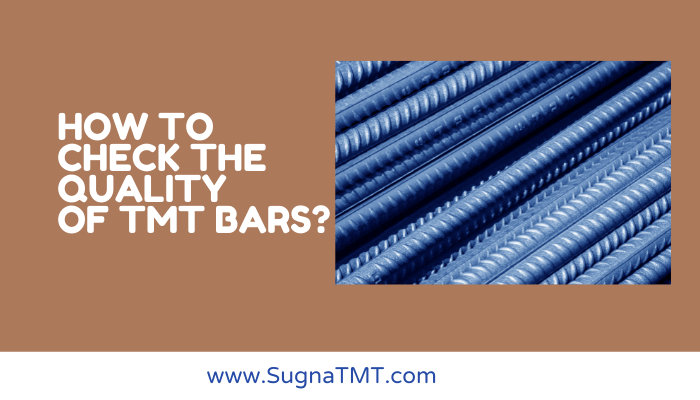Are you just starting construction?
You will be able to save money and avoid last-minute concessions if you make the prudent choice to inspect the quality of the building materials before you begin construction.
From a safety standpoint, since TMT bars form the foundation of the construction, it is imperative to examine their quality.
Main Test to Check the Quality of TMT Bars

Here are several tests you may run to make sure the TMT bars you buy are of high quality.
1. Flexibility and endurance under stress.
The TMT bars you choose must be both strong and flexible so they can be bent to your specifications during construction and robust enough to withstand all the weight and pressure placed on them for many years to come.
Poor-quality bars will eventually begin to fail, endangering people and their possessions. A high-grade TMT rod won’t crack even when bent at an angle of 90 degrees or more, so be sure to pay attention to this aspect.
2. Stress Test for Yield
There are a few queries like, “What level of tension can the material withstand?” When does plastic deformation begin? During the yield stress exam, solutions to these kinds of problems can be found.
Until the yield point, the material will bend elastically before returning to its initial shape once the stress is released. The material can be highly categorized into two main classifications namely brittle and ductile.
Within the category of ductile materials, steel and aluminum frequently fail. Cast iron and glass, on the other hand, belongs to the category of brittle materials. Eventually, the stress-strain curve can be simultaneously used in comparing the two major portions.
3. Run in terms of mass per meter.
Cut samples from several bundles that are at least 4 bars long and 1 meter long. Measure the length of any cut bars by taking an average measurement along at least four sides. On the scale, weigh the bar, and note the result in the register.
Determine the real average weight for at least 3 samples per meter of the bar. The outcome can be compared to the theoretical weight specified in IS 1786. Verify whether the weight variation is within the allowed range according to IS specifications.
4. Chemical composition
Chemical composition testing is done in a spectrometer to perform a chemical test on the 26 elements that make up the TMT bar. The test of the chemical composition takes a few seconds, and the results of the composition are given in the printed form.
It is done to figure out the carbon, phosphorus, and sulfur ratios. Further, to determine the quantity of the copper, manganese, and chromium, a spectrometer can be initially used.
5. Bend Test
Bend the bar 180 degrees and see the rebar’s reaction. It shouldn’t break or shatter as a result.
6. Rebend Test
Bend the bar at a 135-degree angle and watch the rebar’s reaction. It should spend 30 minutes in 100°C hot water. Next, bend at a 157.5° angle and watch the rebar’s reaction. The result is that the bar must bend without cracking.
Final Words
Concluding, it is to say that the largest steel companies in India carry out these tests on their TMT bars to guarantee the strength and quality of the steel they offer. It is therefore recommended to get steel bars from renowned and trustworthy businesses that test their TMT bars to ascertain their quality.

